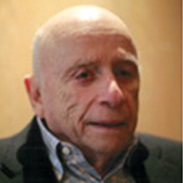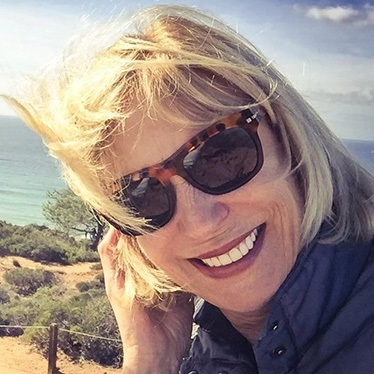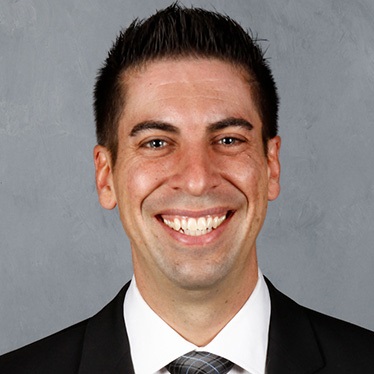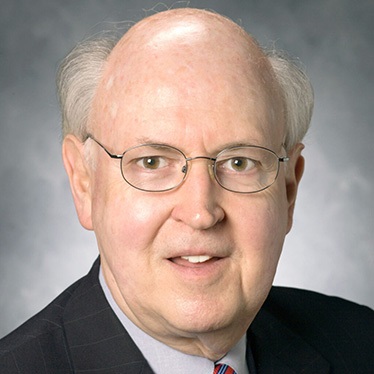A Different Kind of IR
January 10, 2020
Matt Bonham, who passed away this summer, was hired to make international relations professional and experiential. He proved to be just the person for the job.
Lauren Sutkus is a Maxwell MPA/IR student who spent this fall in Washington, D.C., as an intern at the U.S. Department of Treasury, in a division focused on human trafficking. She helped prepare public presentations, conducted data research, and drafted reports. She describes it as a “tough real-world experience that you are expected to give your best to, but in return you are exposed to amazing opportunities.” She hopes to soon work in national security in a D.C.-based agency. The Washington internship, she says, “meant that I could work full-time, take classes, and establish my network in D.C. before I even graduate. . . . I cannot imagine the IR program without the internship portion.”

Not so long ago, however, the MAIR had no “internship portion.” In fact, almost everything about today’s MAIR began in 1992, when Matt Bonham was hired to convert a scholarly subdiscipline of political science into an innovative professional degree.
Matt Bonham, who retired in December 2017, died this past August. Though he is gone, however, the MAIR program continues to build upon his legacy.
As dean, John Palmer—himself a former D.C.-based policy expert—believed that, with effort, Maxwell could build the sort of degree that served future professionals in the IR field. He went looking for a director to effect that change. Bonham fit the bill,
Palmer says, because he was a scholar, but also recently taught in D.C. (at American University) and understood that world. He was also “incredibly entrepreneurial,” Palmer says. Though introverted, Bonham possessed a sharp, specific vision for the
program and a laser-like focus on the goal.
“He knew what students were all about,” says Ryan Williams ’07 MA (PSc)/ ’13 PhD (PSc), who worked for the IR program in the mid-to-late 2000s and then, until recently, directed Maxwell’s D.C. operations. “He knew most students didn’t want to go on and
get PhDs in international relations. . . .They needed experiential learning and internships, so they could leave Maxwell and become part of the workforce in IR.”
“He wanted students to come into the program because they wanted...to improve the world.”
Deanna Phillips
Bonham set his sights on (and earned) Maxwell’s membership in the Association of Professional Schools of International Affairs, which required a 39-credit program incorporating internships. He traveled to Washington and negotiated to make Syracuse University’s Greenberg House the School’s center of D.C. operations, launching Washington semester programs for MAIR and BA students. By 1998, he had hired Michael Schneider (a former PhD advisee and U.S. Information Agency ex-director) to run the D.C. programs. One key, Schneider says, was how closely monitored and integrated the internships were as part of the degree. He remembers Bonham as “ambitious, creative, intellectually keen, and broadly versed.”
Bonham formed partnerships with other schools and with employer agencies. An eager world traveler, he found affiliations in study centers around the globe, and created new study-abroad opportunities. The previous IR program “had no structured study-abroad options, no formal career placement, no organized internships, no practicums,” remembers economist David Richardson, who taught a retooled microenomics course as part of the professional MAIR.
Bonham built a truly interdisciplinary program, tapping into Maxwell’s unique structure. “The historian is going to have a very different view of Europe, for example, from an economist or political scientist,” he said in 2002. “When our graduates encounter people from different backgrounds in their careers, they understand where those people are coming from.”
From Public Administration, Bonham extracted the management courses that would make the MAIR truly applicable, whereas in Washington he drafted a teaching corps comprised mostly of practitioners.
In the late 2000s, the MAIR had blossomed, with enrollment near 90 students per class. Its increasing affinity with the MPA led to the new Department of Public Administration and International Affairs, where both degrees now reside. By then, Bonham had stepped down as program chair. But, says Williams, “it was because of Matt’s success that this happened.”
Through it all, Bonham held a faith that IR serves a higher purpose. “He wanted students to come into the program because they wanted to make a difference, wanted to improve the world,” says long-time IR administrator Deanna Phillips, now retired.
“He wanted a world where people could get along and understand each other,” says Syracuse University PR professor Dennis Kinsey, with whom Bonham co-founded a dual degree for careers in public diplomacy. “Matt wanted the world to be a safer place.”
By Dana Cooke
Related News
School News

Jun 29, 2023


